Janine Benyus
Biomimicry, an Operating Manual for Earthlings
There is a quiet, redemptive story of our time in this conversation — a radical way of approaching the gravest of our problems by attending to how original vitality functions. Biomimicry takes the natural world as mentor and teacher — for, as Janine Benyus puts it, “we are surrounded by geniuses.” Nature solves problems and performs what appear to us as miracles in every second, all around: running on sunlight, fitting form to function, recycling everything, relentlessly “creating conditions conducive to life.” Janine launched this way of seeing and imagining as a field with her 1997 book, Biomimicry: Innovation Inspired by Nature. Today she teaches and consults with all kinds of projects and organizations, including major corporations, as you’ll hear.
Welcome to this unfolding parallel universe in our midst, which might just shift the way you see almost everything about our possible futures.
This conversation was part of The Great Northern Festival, a celebration of Minnesota’s signature cold, creative winters.
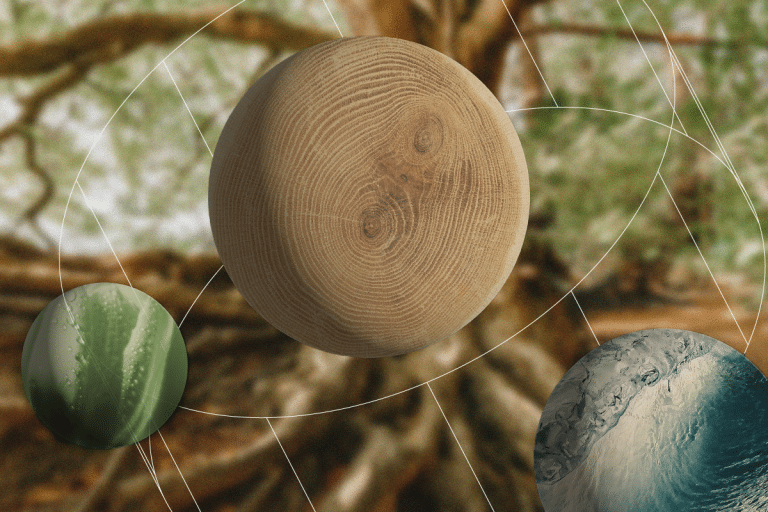
Image by Lilian Vo, © All Rights Reserved.
Guest
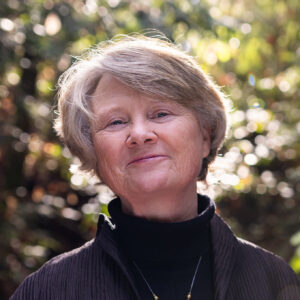
Janine Benyus is the author of several books, including Biomimicry: Innovation Inspired by Nature. She is the co-founder of the non-profit Biomimicry Institute. She also co-founded Biomimicry 3.8, a consulting and training company.
Transcript
Transcription by Alletta Cooper
Krista Tippett: A few years ago, the term “biomimicry” started turning up as I moved around the world. I’ll meet someone in a field that has nothing linear to do with the natural world — but someone creative and inquisitive and also usually markedly kind — who is remaking, revitalizing their world in some corner. Biomimicry is not a science per se, though it works with science. It’s a design discipline that takes the natural world as mentor and teacher, inviting the intelligence and wisdom of biology and ecology around tables where previously only engineering and construction and material sciences sat. Biomimicry inquires into the mechanisms by which nature solves problems — and by the way, performs what appear to us as miracles in every second all around: running on sunlight, fitting form to function, recycling everything, relentlessly creating “conditions conducive to life.” As Janine Benyus puts it, “we are surrounded by geniuses.” She launched this way of seeing and imagining as a field with her 1997 book Biomimicry: Innovation Inspired by Nature. Today she teaches and consults with all kinds of projects and organizations, including major corporations, as you’ll hear.
There is a quiet, redemptive story of our time in this conversation — a radical way of approaching the gravest of our problems by attending to how original vitality functions. I for one am grateful to have been let in on this unfolding parallel universe in our midst, and it is shifting the way I see almost everything about our possible futures.
[music: “Seven League Boots” by Zoë Keating]
I’m Krista Tippett, and this is On Being.
Janine Benyus is co-founder of the non-profit, Biomimicry Institute, and of Biomimicry 3.8, a B Corp consultancy. This conversation was part of The Great Northern Festival and held at Mia, the Minneapolis Institute of Art. We were welcomed by The Great Northern’s Executive and Artistic Director, Kate Nordstrum.
[applause]
Tippett: Hello. Thank you so much, Kate. It’s really wonderful. We’ve had the most incredible experiences with Great Northern. And I’m so excited to be here with Janine Benyus.
I also want to say I realized as I walked in that I was supposed to prepare a formal introduction of Janine, which I failed to do. But what you’re going to get instead is a deep dive into who she is and what she does and brings into our world. And so we can just go straight into it. And if I have left out some really important thing that you want everybody to know, you throw it into the conversation.
Janine Benyus: I doubt you’ll do that.
Tippett: So you have made your home in Montana, but you grew up in New Jersey. You ended up studying forestry, you wanted to become a natural history writer, and your road to and beyond Biomimicry wound through investigations of ecosystems and the secret language of animals and wildlife habitats and being a zoo lover. And I’m really curious about how you might be able to trace the roots of these curiosities and this passion in your earliest life, in the life of your childhood.
Benyus: That is so present to me every day, actually. It was New Jersey and it was the suburbs and my parents, they knew they had this wild child. [audience laughs] And so bless them for always putting me at the wild edge of wherever that suburb was heading next. And we moved several times. They kept moving me out. The suburbs would come and roll over us and we’d move out. My dad was then commuting so far into the city. And I look back and I think I know now what they did. But I always had a ravine behind me. And then there was a meadow called Sir Morton Rom Field. Those places I knew so well. Because, you know, that was church. I’d wriggle out of my mom’s arms in the morning, she’d hand me a lunch bag and I’d be gone until she rang and rang and rang the bell.
So I got to know, especially this old field, this old New England kind of field that grows back — very diverse and a lot of organisms living there. And I knew where they all lived. I spent enough time out there by myself. I knew who was going to have babies, where the rabbits were going to have babies. And they’ve been down low for a while. And here’s where a cocoon is going to become a butterfly. It was Wind in the Willows to me. Every day I’d rush out there to find out how everybody was doing in the neighborhood, seriously.
And then one day I started to see the signs. I saw these little metal wire posts with flags on them and cigarette butts and footprints. And I was reading Sherlock Holmes, so I made plaster of paris out of the footprints. [audience laughter] And I gathered up the cigarette butts and my mother thought I was smoking because I had them in a thing. And what it was, was phase two of my subdivision. So this comes directly watching for a summer a bulldozer take off everything, including the topsoil, replace it with turf.
Tippett: Did you watch that more than once, it sounds like?
Benyus: That’s the one that I really, really remember. I think my parents knew that it was coming and they would move us, but that one I lived through. And I said to myself, “If the guys in the trucks knew the neighborhood as well as I did and knew the community members as well as I did, they would find a different way of doing this.”
Tippett: And your community members were the other creatures alongside the human creatures?
Benyus: Yeah, right. So I thought I’d write about it.
Tippett: How would you begin to define what biomimicry is?
Benyus: I will give you the writerly definition that’s tucked into the book, which is, “the conscious emulation of life’s genius.” And it’s also — it’s an innovation practice where the people who make our world, the designers and the engineers and the architects and the construction workers, when they go to solve a problem, they say, “What in the natural world has already solved this problem?” And then they try to emulate that organism or that ecosystem and hopefully come up with something that helps us live here more gracefully.
Tippett: This is from the Biomimicry book, which was published in, was it 1998?
Benyus: ’97.
Tippett: ’97? Okay. “So far we’ve lived by the grace of green plants and we owe both our lives and our lifestyles to them.” And a few sentences later, you write, “For my money, the discovery of fire, as ballyhooed as it was, was vastly overrated.” [laughter] So take us into your way of seeing those things.
Benyus: Well, the way we power ourselves now is with fire. We burn up ancient photosynthesis — oil and coal. Fossil fuels are these organisms that did get their life from the sun. All life, except for some sulfur vent critters at the bottom of the ocean, all life comes from the light of the sun. And somehow we had all of these examples around us of how to power ourselves with the sun, but instead, somebody dug up ancient photosynthesis and we started to light it on fire. What it’s been for us is like putting all your furniture into your house, closing every window and door, and lighting it. And that photosynthesis was the first paper — artificial photosynthesis was the first paper I collected because I thought, “Surely people do solar cells by looking at leaves.” And they don’t.
Tippett: Well, you say the first paper you collected.
Benyus: First paper I collected for the book, yeah.
Tippett: Oh, that you collected from the book.
Benyus: That I collected for the book. Because I said, “Is there anybody in the natural world trying to emulate these geniuses?” And I knew that fire was very powerful. But it was also very violent compared to this silent powerhouse that is the photosynthetic reaction center. This little wishbone-shaped molecule that grabs light photons, two photons femtoseconds apart and takes our out-breath — carbon dioxide, and water, and some minerals — and makes sugars and starches, and then gives us back oxygen. So for a biologist, there’s nothing more poetic really than photosynthesis. It’s just so beautiful in its symbiotic exchange: you give me carbon dioxide and I’ll breathe out some oxygen for you.
Tippett: I was thinking also about when I spoke with Robin Wall Kimmerer, and she talks about how she has “photosynthesis envy.” So this is just her variation on what you’re saying to us. And again, what we’re talking about is so obvious, so given, and so miraculous. So she said, “I have photosynthesis envy. The ability to take these non-living elements of the world, air and light and water, and turn them into food that can then be shared with the whole rest of the world, to turn them into medicine that is medicine for people and for trees and for soil. And we cannot even approach the kind of creativity that they have.”
Benyus: No, it’s true. I love her, too.
Tippett: That’s what you’ve been…
Benyus: I love her.
Tippett: …bringing into the light.
Benyus: The thing is, that as I was researching more and more — the next group of papers — I was reading about materials and how we make materials by heating them up to high temperatures, high pressures. “Heat, beat, and treat,” is what it’s called. If you are a material scientist, and you were at a conference, you were about to present a new polymer, I would say to you in the hallway, “What’s the heat, beat, and treat on it?” Because that’s the formula.
Whereas in photosynthesis, you have the sun. Super powerful. Light source. And then it just has these electrons lifted and they go one molecule at a time, they hop. And that’s this sort of subtle, non-violent way to make things. There’s this beautiful sort of controlled heat. And when we eat, it’s combustion, but it’s controlled. There’s this elegance because everything had to be done in your soft body. It had to be life-friendly.
Tippett: Weren’t you also the poetry editor at Rutgers when you were a student?
Benyus: [laughs] You did do your research.
Tippett: I did. Well, also, you are poetic. So I want to read — there’s a list from the book of basically fundamental observations behind biomimicry, which also I think is poetic in its clarity and compression and elegance.
“Nature runs on sunlight.
Nature uses only the energy it needs.
Nature fits form to function.
Nature recycles everything.
Nature rewards cooperation.
Nature banks on diversity.
Nature demands local expertise.
Nature curbs excesses from within.
Nature taps the power of limits.”
Benyus: Yeah.
Tippett: Has that list altered at all since you first started writing this down?
Benyus: There are about 26 of them now.
Tippett: Okay.
Benyus: “Life’s Principles.” What we decided when we went on this journey to try to help designers make things, power themselves, and build things the way nature does, we realized that a shallow imitation — if you were going to imitate, for instance, how a spider makes its silk, you might just wind up kind of cheating and taking the genetic material, the genes from a spider and putting them into a goat and milking out the protein. That’s shallow, very shallow biomimicry. So what we realized was that it’s not just the material itself; it’s how it’s made, and it’s how the spider fits into its watershed and into its biome that really, if we want a truly regenerative world, we have to mimic at all those levels. So we came up with an extension of that list called Life’s Principles, which is what all organisms have in common.
Tippett: But to think that you can do that in 27 lines, is that what you said?
Benyus: 26.
Tippett: 26. And also that “life creates conditions conducive to life.”
Benyus: Yeah.
Tippett: There is Wes Jackson, the agronomist, geneticist, Land Institute, wonderful human being. I think you quoted him saying, given this, what we’re describing, the notion of talking about the natural world as a resource “becomes obscene.”
Benyus: That’s right. Once you see nature as mentor, gratitude tempers greed, and the notion of resources becomes obscene.
Tippett: So you wrote this book, you did not realize I think that you were kind of giving rise to a field, really. But it’s interesting to me that you started tracking this, what you would then call biomimicry and what is now called biomimicry, in 1990. Where you saw it was in the academy, being funded by the military and space agencies and departments of energy, which is so fascinating, isn’t it? Because those are also places of power. They were paying attention to this and keeping it to themselves.
And then it seems that what you realized after you published the book is that the people who were really reading it and taking it in were designers.
Benyus: Yeah.
Tippett: And so it was kind of an evolution that you realized that what you had actually described were design principles. A new kind of design discipline.
Benyus: Yeah. It’s interesting because I look back now and I see that I named the chapters questions. “How will we heal ourselves?” “How will we store what we learn?” “How will we conduct business?” And boldly saying “will”: “How will we?” It was almost like we were so far from everything I was writing about in the natural world. But that hope that’s bared out on that page, that table of contents, is the “will.” “How will we” do this, someday?
And I was writing another book when I started to get calls from the people who make our world, the designers and the architects and the chemists. And they said, “Please bring your biologists to the design table.” And I said, “What biologists?” [laughter] I’m in my pajamas writing my next book. But they did know that. They read that literally: how will we?
Tippett: I almost feel like as you’re talking about that, that you were surprised at yourself, that you’re wondering, where did that come from in you, that conviction.
Benyus: And I started in 1990. And the thing was that I didn’t know how we made our world because I had been educated in one stream, which biologists are and ecologists are. We learn about how life works, the rest of nature works. And then everybody that picked up on biomimicry, they got put into another stream, which was the world. I had never taken a factory tour. I do now. I take factory tours and I see how we make stuff and I see how we do what we do. And we had been educated separately and then biomimicry was like this estuary, like this salt and fresh coming together or this fertile crescent where these two disciplines came together. And I saw it. And it was such a faint signal when I was doing the book. It was just bench scientists doing this.
Tippett: Yeah. Well, it was the last century after all.
[audience laughter]
Benyus: It was way last century, yeah. Our century. The last century. Anyway, so I was surprised.
Tippett: Well, so here’s one way you described it that I loved. You said that you wrote it and then you found, as you say, it’s a faint signal, but then you found biomimics, you found “fascinating people working at the edge of their disciplines in the fertile crest between intellectual habitats.” If there’s one thing I’ve heard in these 20 years of talking to people who found ways to shift some part of the world on its axis, it’s all that change happens in the margins. It’s not happening above the radar, in the headlines. And so that makes such sense to me. So who were these people in these fertile crests and what were they doing, what were they making or doing differently?
Benyus: Oh my gosh. Well, they were — the material scientists were studying spiders and studying rhino horns and studying abalone shells. They were seeing how life makes things without kilns, right? And how is that possible? The thing was, when you go to meet with these people, they’re in such a reverential state because it’s hard to be a botanist or be a solar cell manufacturer and try to mimic a leaf. It’s hard work. It was people like Wes Jackson who was saying it’s not just the problem “in” agriculture, it’s the problem “of” agriculture. And it’s these annual plants that we plant the same thing for miles in a monoculture. This was seen as wild-eyed.
He went to the prairie next door, the Konza Prairie in Kansas. And said he literally took scissors and cut the plants. And there’s this wild diversity, hundreds of species — not 12, not two, hundreds. But when he cut them and he looked at them, he started to see a pattern and he pulled, he said, “Okay, there’s legumes. Those are the nitrogen fixers.” Like pea plants. “And then there’s composites like the sunflowers, and then there’s cool season grasses and warm season grasses.” And when he saw that pattern, he went, “Oh my, perhaps we should have those four things.” And our crops fall into those, by the way — maybe we should plant them together in this part of the world. In the tropics, it’s going to look like a three-story forest.
Tippett: You mentioned abalone, which you’ve written a lot about, which is really fascinating also as kind of an example of something that occurs in nature that we would think couldn’t be. Just that example, what that is, and also what people were doing with it.
Benyus: Yeah. Well, the mother of pearl on the inside of an abalone shell, or there’s lots of shellfish who have this, and that mother of pearl, believe it or not, it’s twice as tough as our high-tech ceramics that you have in your engines, in jet engines. It’s super tough. So you think, if it’s this tough against cracks and against any kind of impact that you would give it, then it must be really, really hard, right? What you find is that the puff pastry is mineral, it’s calcium carbonate like chalk, which is not very tough. And then in between the layers of puff pastry, there’s this gooey sort of protein, which is very — again, everything was a paradigm shift as I would find the way we do it.
So what the critter does is it’s this soft-bodied critter, and so it’s got to fill the ceiling, and there’s seawater. And so it releases these proteins into the seawater, and they self-assemble, because of the way they’re shaped and their charges, they self-assemble into a very thin sheet. And there are these positive and negative charges in particular places. And then the minerals from the seawater precipitate out, they land on the landing sites, calcium and carbonate are also charged, and they self-assemble into a rhombohedral crystal, which is one of 14 kinds of crystals, but it’s the strongest one. And then there’s a layer of protein, and then there’s a layer of mineral. So it’s the seawater, what’s already in the seawater gets pulled in and coaxed into form, to self-assemble this amazing material.
Tippett: What have you found designers making as a result of that, being mentored by that?
Benyus: Exactly. Well, that is now being formed into a glass that is extremely, extremely tough. So it’s layer-by-layer glass, transparent. The interesting thing about it is that there’s no fossil fuels being burnt to create this glass. When I say glass to you, you think fire, don’t you? It’s not. And that’s everything in the natural world. Because it’s all made in or around the body, they’ve found a different way.
[music: “On the Hour” by Blue Dot Sessions]
Tippett: You call the scientific method or paradigm that you use with your colleagues the way of “muddy knees and epiphanies.” [laughs] So would you describe…
Benyus: Yeah. That’s our North Star compass. That’s our compass in our company.
Tippett: Okay. Describe that scientific method to us.
Benyus: “Muddy knees and epiphanies.” [laughs] What happens if we’re lucky, and the way we prefer to have it happen is that when we — and we, I’m talking right now about Biomimicry 3.8, it’s a consultancy. It’s an interesting thing to hire us. We immediately want to take you outside. Even if it’s in the suburban area around you. I know how to find stuff in suburbs.
Tippett: Yes, you do.
[audience laughs]
Benyus: But if we’re lucky, we get to go to Costa Rica, we get to go all over the world in beautiful, beautiful places, and we take folks out. When we were looking for a compass statement, “muddy knees and epiphanies” came from one time we took some wastewater engineers out to the Galápagos Islands, and they were pretty resistant. We were on a boat for seven days together, and they were like, “Why are we here? This is a boondoggle.” And I said, “Well, what do you guys do?” And they said, “Well, we filter stuff out of water.” And I said, “Well, let’s go snorkeling, because everything in this ocean is filtering salt out of water because it lives on fresh water and it lives in saltwater. Everything is a membrane.” And that got their attention. That got their attention.
And then when we would go to the islands — before that, they’d get out, they’d take some pictures and they would jump back on the boat. But after they started to really look at these organisms as their mentors and their engineering peers or mentors, they were just on their knees. Just on their knees having epiphanies. I walked by this guy named Paul, and he was looking at a mangrove, and he was a pretty buttoned-up guy, engineer, and he was crying. Had tears streaming down his face. I stood next to him looking at the mangrove, and I could get that. It’s a pretty spectacular thing. And he said, “How is it that in my education, I’ve been doing this work for 30 years, 40 years, I’m a desalination expert. I filter salt from water, and this plant has its roots in saltwater and it’s solar powered and it’s desalinating.” He said, “I’m crying because it’s beautiful and because no one ever told me.”
Tippett: This is such a statement also about how paltry our definition and approach to innovation has been. Innovation is not always progress. You wrote, all the activities that caused pollution were in their origins lionized as progress. What we did with food, turning food into something that comes out of cans and boxes was incredible progress.
Benyus: That’s right.
Tippett: Isn’t it just, in this context, just absurd and hilarious, if it weren’t so absurd, that we talk about farm to table as this incredible invention [laughter] and then charge a lot of money for it?
Benyus: I know. I know. Exactly. Exactly. We’ve really gotten far, far away from, well, the real source of our health and our wealth. We’ve gotten so far away from where these gifts actually come from. I should say this right up front because I don’t think biomimicry is new. It’s new to us in Western industrial culture.
Tippett: Right. It’s new to the scientific method.
Benyus: It’s new. People who lived really embodied in their places did biomimicry naturally. In this part of the world, they would watch snowshoe hares and they’d say, “Do you ever look at snowshoes? It kind of looks like the footprint of a snowshoe hare.” Or maybe we’re going to make a chisel and you look at the beaver’s teeth. This is not new, but I call it a re-membering. As in…
Tippett: With a hyphen.
Benyus: …being dis-membered. It’s a re-membering. And that’s why I say, “Name anything we can learn from the natural world.” Except maybe our ethics and our morals. But name how to communicate, how to cooperate, how to heal. Anything we’re actually trying to do, somebody on this planet has already tried to do it. And the thing for me that I think goes back to your original question is, I was hoping that the guys in the bulldozers would develop this radical empathy that I had for these organisms. Because if you spend long enough, you realize, you see them tuck their kids into bed at night.
Tippett: The organisms?
Benyus: Yeah. And you realize, “Oh, okay, now I’m watching them get food, they’re hungry. I do that, too. I’m watching them bathe. I’m watching them make their houses.” Right? And so the false separation between you and the rest of the natural world falls away when you get this radical empathy. And nothing creates that like biomimicry.
Tippett: Yeah, but that formation to that empathy and that just looking and paying attention to those organisms is kind of trained out of us. It’s not just that we don’t get that formation, it’s that we get the opposite. I’m such a big believer in the power of questions, and you said your chapters are questions. We’re so fixated on answers and our solutions, but it’s really when our questions change, which science knows and also in a life. It’s when our questions change that so much is possible. So I’ve been thinking in these last years about — you know how basically I think culturally we ask, essentially capitalist questions are our starting point, just instinctively: what, how soon, how much.
And I just — I’ve been paying attention to the questions in your chapter that you mentioned, other questions you’ve thrown out there like, “What’s worth doing? How shall we live here?” Or this was a lovely podcast, the Wild podcast that you did, For The Wild podcast, the questions, “What would nature do here? What wouldn’t nature do here?”
Benyus: Yeah. There’s this set of questions that we ask because biomimicry looks at nature as model for emulating, measure to judge the rightness of our innovations — that Life’s Principles — and mentor. And the questions that go with that are, “What would nature do here?” And “here” is the most important part of that.
Tippett: So wherever that “here” is.
Benyus: Because that’s context. “What would nature do here? What wouldn’t nature do here is that measure part. And then why and why not?” That’s the mentor part. That’s the part where if you have a mentor at work, you’ve been there a while, something weird happens, you don’t know what it is, you go in, close the door, say to the mentor, “Why did that just happen?” “Oh, let me tell you about that.”
So life knows how to live here over 3.8 billion years, it does. And we have spent 250 years of Western science asking about nature. And now, we are starting to ask to learn from nature. It’s exciting. It’s a completely different way to do science, to learn from rather than just about. That’s the switch. That’s really the profound switch. And it calls on us to sit down, get out our notebooks, and pay attention in a whole different way than when we were just measuring in natural history.
My field started with, you went out in the jungle and the first thing you did, you didn’t ask, you shot it and bring it back. Our natural history museums are full of drawers. And that was when they were asking the “what” question — what are you? Not, how do you live here?
Tippett: Someplace else you said our job is to get out of being this role of manager, we’ve been managing the natural world, but helpers. And then how you explain, that is, being a helper would say, “What do these microbes need?”
Benyus: Right. I have a forestry degree as well as an English literature degree. So I’ve always been straddling those two worlds. Natural resource management. As if.
[audience laughs]
Tippett: Yeah.
Benyus: As if we could. And so this great humbling, the more you know. I’ve spent my whole life reading about organisms and learning about them and living in and amongst them. And the more you know, the more you realize, all you can do is try to be hospitable. Literally, help the helpers.
So Laura and I, we bought a hardscrabble piece of land in Montana, and we have been part of 32 years of that land regenerating itself. And what I can tell you is setting a banquet for the real helpers, helping the helpers, is, what would the microbes want now? Literally creating the conditions conducive to life and then life heals it.
Tippett: So much to talk about. You dedicated the Biomimicry book, “for the mentors on the Tangled Bank.” Was that in this place?
Benyus: That’s from Darwin. In Origin of the Species. Darwin, who’s never said “survival of the fittest,” by the way.
Tippett: Okay. No, you said he didn’t say “fittest,” he said “fit.”
Benyus: He said “fit.” Herbert Spencer, who was a political scientist at that time…
Tippett: But that is incredible. Let’s stop and take that in because we built our entire society around “survival of the fittest.”
Benyus: I know. I know. I’m so glad I’m getting this out. [audience laughs] This is what I wanted to talk about. You asked and you got it out. Thank you. Seriously, we have built our whole society around this. He did not say that. He said, “survival of the fit.” Which means: fit to place, fit to your community. Because he understood, studying evolution and all, coming up with natural selection — he understood that organisms don’t just move into a place; they co-create a place and then the place creates them, and then they create the place. And so that’s this idea of — I also think of it as a homecoming, like coming back to fittedness. To fittedness, so that the habitat changes. It changes all the time. And so you have to go — and then as an organism, like humans: conditions have changed. I’m no longer fit to this place, but I’m going to evolve my behaviors, and physiologically, I’m going to evolve to become more and more at home here.
[music: “Town Market” by Blue Dot Sessions]
Tippett: Okay, in case you are incredulous at this last stunning idea because you, like I, read the words “survival of the fittest” in the edition of On the Origin of Species that you were assigned in school — here’s some deeper context. That phrase was not in Darwin’s original text. But his contemporary, the sociologist and philosopher Herbert Spencer, who Janine began to mention, was a popularizer of applying Darwin’s ideas to the human social sphere — social Darwinism. And Darwin himself eventually borrowed and added Spencer’s words “survival of the fittest” starting with the fifth edition of his history-making work.
[music: “Town Market” by Blue Dot Sessions]
Tippett: This is all such a refreshing and redemptive reframing of — none of these words are big enough — but the ecological calling before us as a species in this century to orient around the genius that is there to mentor us, to orient around what is conducive to life and how we already live on a planet that knows how to do that.
Benyus: Yeah. It’s relieving.
Tippett: Hmm?
Benyus: It’s relieving…
Tippett: It’s relieving.
Benyus: …to know, to remember that we live on a competent planet. [audience laughs] And we’re part of it, and we’re young.
Tippett: We’re young. Yeah. What is it you say, our “experimental youth as a species” is what we’ve been in. I’ve thought about this, too: how do humans learn? How do young humans learn? They do take things apart before they put them back together again.
Benyus: Yes.
Tippett: However, they usually don’t burn the house down.
Benyus: Yeah. I call us toddlers with matches. [audience laughs] It’s not something you want to see. We’re experimenting. Back to fire.
Tippett: Back to fire.
Benyus: Yeah.
Tippett: The Aspen Institute asked you once, is biomimetic innovation powerful enough to — what did they say? — solve, probably, climate change? [laughs] Your answer started with, you said, of course, “mimicking life’s genius is absolutely part of the solution.” You said, “After all, only humans see carbon dioxide as the poison of our era, the rest of nature sees it as a building block.”
Benyus: [laughs] That’s right. That’s the thing. And if you look into deep time on the Earth, there were some other really scary moments, like this big oxidation event that happened where these organisms started to photosynthesize and put oxygen into the air and too much. It’s a really reactive thing. But then other organisms came along and said, “Wow! Look at all this oxygen. Maybe we can use it to respire, to combust our food.” And so we have a lot of carbon dioxide in the air right now, legacy carbon dioxide.
Tippett: Legacy carbon dioxide. [laughs]
Benyus: Yeah. And we need to get it down. It’s real simple, stop emitting it right now. But then you’re going to have to pull that back home, that carbon dioxide. It came out of our soils, we burned it out of these fossil fuels, but it actually is carbon and most things are made of carbon. And so what we need to do is figure out how to take carbon dioxide. One of the things we need to do, take carbon dioxide and use sunlight to do what plants do, which is to make our world with that carbon dioxide.
Tippett: You said, what is it? “Plants use carbon to make sugar, starches and cellulose.” I didn’t know all this. “Corals use carbon to build reefs, mollusks use carbon to manufacture their shells. Nature’s been writing the book on carbon chemistry for billions of years, and suddenly it’s required reading for humanity.”
[audience laughs]
Benyus: Yeah.
Tippett: That’s you.
Benyus: Yeah. And there are six pathways that we know of how to take carbon dioxide and put it with other things to make things. Right now, if you go to San Francisco Airport, there’s a terminal that has all of its rock aggregate and all of its concrete is made with carbon dioxide that’s sequestered using the — it’s a guy named Brent Constantz, who is a coral reef expert.
Tippett: So he’s a biomimic?
Benyus: He’s a biomimic and he has a company called Blue Planet. And he takes CO2 out of smokestacks, uses the coral reef recipe in mild conditions, aqueous conditions, and takes seawater or brine from desalination plants. And takes those minerals. Those minerals precipitate out to be concrete and rock aggregate, which means no more driving a truck to a face of old limestone and mining it away. No more digging up aggregate. The waste product is brine from a desalination plant and CO2 from a smokestack. And that’s happening now, and people are making plastics out of CO2. So it’s happening, still not as widespread as fossil fuel plastics.
Tippett: Yeah. It’s still not happening at an ecosystem level, we haven’t created that as an ecosystem.
Benyus: Yeah. I’m really impatient with the toddler. [audience laughs] But you got to just keep pointing at what is obvious. I’m the queen of the obvious with this. This is not hard science.
Tippett: I think that’s probably part of the problem because it feels too good to be true. Do you know what I mean? It feels like it can’t be that obvious.
Benyus: Yeah, I know. The big question is: why wasn’t this our first instinct?
Tippett: Well, as you said, it was the first instinct of plenty of people.
Benyus: Plenty of people.
Tippett: But not at least in this industrialized Western world over the last few hundred years.
Benyus: No. And we are very…
Tippett: We’re the ones who are burning the house down.
Benyus: Yeah. And we’re very entranced by our technologies. My goodness. I mean, just now, just very recently, we’re seeing the unintended consequences. But can you imagine how — I have this set of, you remember stamps, like ink stamps?
Tippett: Yes, I do.
Benyus: I collect ones that have to do with progress. So people used to like, “Oh, I think I’ll decorate my stationary.” And it was a factory with a smokestack, and smoke coming out of it. And that was a good thing. We believed that. We were like, “Wow! No more vagaries, no more hunger, no more strife.” You can understand how we did it, why we went that way. But as we were progressing, why we didn’t ask these elders is a deeper human question.
Tippett: I have so many things I want to talk to you about, and I’m realizing I can’t, I’m not going to get to all of them. I would like to read this to you. It’s possibly a detour, but it’s just something that fascinated me.
You wrote this: “If you look at the periodic table of elements, 90% of the human body only uses six of those 118 things, only the ones that are safe. And then reconfigures that tiny subset into millions of outrageously interesting designs. Every time we humans need a new function, we make a new material. That’s why we have 350 polymers. Life doesn’t. Life says we have polysaccharides and we have proteins. What can we do with them? Life doesn’t import anything in on ships. In human-made design, we use almost all of the periodic table because we can, even the toxic stuff. But life doesn’t. It only uses the ones on the light part of the table, the non-toxic ones. To me, that’s the operating manual for how to be an earthling, for us to be the positive contributors instead of the invasive species.” I think you said this at Bioneers: “The chemistry is right there.”
Benyus: Yeah, it’s right there. And when you look at that kind of chemistry, what you do realize is that while the materials are simple, they’re a Lego set so that they can be used again and put together in different ways. So life adds design to matter. We add high heats and pressure and stuff to matter. Life adds design. It’s just how it’s laid up that makes it strong or stretchy. And when you look at that chemistry, it’s amazing by itself, but what’s really amazing is that the chemistry itself winds up enhancing the place where the organism lives and where the organism’s offspring is going to have to live.
So the chemistry itself builds soil, the chemistry cleans air, it cleans water. As you get deeper into it, you realize that the way it gives back, the way these organisms in the process of living their lives sweeten the Earth and make of this place an Eden. Biomimicry begins with this sort of journey to — it’s the hero’s journey. It’s, “Here’s how we do it. We’re in trouble. Oh look, there’s help.” And it’s even deeper than that. Not only is it cool chemistry, but it’s chemistry that contributes and that gives back and that enhances. And that’s beneficent. It’s not just safe, it literally creates conditions conducive to life.
Tippett: You have said, “The whole time we are evolving, beauty [has always been a] signal of the good,” too.
Benyus: Yes. That’s what’s really interesting. We are so close to what we used to be when we knew the embodied wisdom of living in place. We’re so close to that. I love learning about evolutionary psychology and biophilia and how men, too, but women particularly love flowers. And what they think now is because as we went foraging and gathering, we would look for flowers because in two weeks it would be food. It would be fruit.
Sparkling water. We love to put our houses near water. Sparkling water means there’s oxygen in it and it won’t make our babies sick. Beauty is the signal of the good. And you can take people now, modern people now and say, give them pictures of healthy forests and slightly diseased forests and they will know, “something’s wrong with that forest.” We, deep in ourselves, if we start listening to that cellular truth, which used to keep us alive, we will create beautiful things in beautiful ways. I do believe — and I’ve watched over all these years people’s reaction to biomimicry and it’s overwhelming. People are yearning. They’re like, “Oh my gosh, I used to do this.” Right? “I used to do this.”
Tippett: Right.
Benyus: And so when we see something in the natural world, it’s not just its ratio or its form that’s beautiful. It’s beautiful because it’s healthy. It’s beautiful because of the way it’s done. And we want to be, I think instinctively, to be fit to our place. We want to be part of that beauty. That means not just superficial beauty.
[music: “November Mist” by Blue Dot Sessions]
Tippett: I think so much about how there’s a lot of despair, there’s a lot of anxiety, there’s a lot of depression. There are a lot of obvious reasons for that. But I think at a cellular level, the distress of our world, of the microbes, of the water, of the forests is we also feel that distress, that distress is in us because we are of this. And it’s such a gift for you to remind us that we are also of…
Benyus: Yeah. I mean…
Tippett: …this beauty, this…
Benyus: …it is our malaise. It’s our malaise, I do think. We’re beginning to pay attention to it. And I think the local food movement is the first part of that and the health and wellness movement is the first part of that. And I’ve watched us ask a lot more of our designs, whether it’s the way we do agriculture. We’re asking more and more and more of those designs. It’s not enough for an iPhone to be beautiful, we don’t want it leaching chemicals into our hands.
Tippett: But I also think, we haven’t named this yet, you are also being approached by and working with Boeing and Jaguar and Google and Nike and General Mills and Procter & Gamble and on and on and on.
Benyus: Yeah. People who make our world.
Tippett: That’s a story that is not being told. It’s hard to imagine how this is all landing in those corporations, but maybe tell us about a project that you know about right now or something you’ve seen happen that would be unexpected.
Benyus: It’s been 25 years. We call it “roller skating in the halls of power.” And we go where the impacts are big. So for instance, now, two of our biggest clients is Ford Motor Company and Microsoft. And we’re not doing product design there or process design. We do a lot of manufacturing design. We’re not doing that. We’re taking the biggest artifact that humans make, which is our built world. The factories, the corporate headquarters, warehouses. In Microsoft’s case, it’s data centers.
Microsoft is building 30 to 50 data centers a year. They are big. They are like giant big boxes. They are a giant parking lot and a giant flat building. What we’re doing there is we actually call it “factory as a forest.” As ecologists, we go in and we say, “You are going to be building this here.” And we say, “If you weren’t building it here, this would be this particular kind of forest, this particular kind of ecological land type.” And then we go and we find the healthiest version of that we can, called a reference habitat. It’s our elder in system form. And we measure that to find out the ecological gifts, how much water is being cleaned by that site, how much that forest — how much air is being cleaned, how cool the air is, how much soil is being built, nutrients cycled, how much wildlife’s being supported.
These are the ecological gifts that that forest right next door is giving you. And that’s about, well, some of these are huge, 4,200 acres. The new Ford plants, 4,200 acres. Or, four acres. We come back and we say, “Acre for acre, here’s how much carbon you have to store, here’s how much water you have to clean.”
Tippett: Really?
Benyus: Here’s how much — it’s ecological performance standards because engineers are used to meeting standards. So what we’re saying is you want to be truly biomimetic, you’ve got to function like the wildland next door. By function, I mean the gifts. Because as an ecologist, what I know is health: you literally know whether a forest is healthy by all the things it gives away. Dirty water comes in, it cleans the water and sends it downstream, cleans the air, sends it downwind, creates habitats these wildlife migrate through. Well, that’s a big ask of a giant data center and a giant parking lot.
Tippett: [laughs] We are so happy to know that you’re working on that.
[audience laughs]
Benyus: That’s what we’re doing. That’s what we’re doing. That’s what we’re doing. We’re working on 20 projects right now around the world. And here’s the thing. We’re about to welcome about three billion more humans to the planet. Most of them are going to be in cities. So between now and 2050, we’re going to be building the equivalent of a city for one million people every five days. So it’s getting done this way — they do it differently — or not. We’re trying to intervene. As Donella Meadows would say, we’re trying to intervene in the system where we can bring nature’s wisdom to the places that need it the most, which are numerous places, but certainly the built world, our nest.
Tippett: You’ve been involved in a number of film projects and I’d say if people are interested in this, there’s a lot out there. One of them begins with people reflecting on that moment of the Earthrise image, which really for new generations does not have the resonance. But in the late 20th century, this moment of seeing the Earth from the outside, seeing the planet, the “big blue marble.” I wonder what you think the equivalent of the Earthrise image is for our generation in time. I think it’s not looking up at the stars.
Benyus: I don’t think so either. I don’t think — No.
Tippett: What for you, what would that image be that changed everything or that changes everything, that puts everything into context?
Benyus: It would be a before and after picture. And it would be us looking, say, from above, at a place that we have pillaged, and taken apart, and it’s hardly breathing. And then, human beings come in and they learn to help the helpers. And the other picture is that it’s pulsing with life. It’s green, it’s fecund, it’s generative. Fragrant air, clear sparkling streams, and us living among it, in it, in a new way. It’s a miracle when land heals. For us to be part of that miracle is what we need right now to heal us or heal ourselves.
Tippett: To heal ourselves. I remember you telling the story about your land that you helped. You helped the helpers to bring it back to life. And you tell the story about you had duckweed, but no ducks. [laughs] And over time, the creatures came back and a moose came. So here was your metric for health. I think you said it was like the king or queen had come to visit.
Benyus: Oh, it was a visitation for sure.
Tippett: That was nature’s sign.
Benyus: Oh man, yeah. You wake up in the morning, the pond is right there. And we woke up and a moose came walking out of the pond, like where he is right there, just walking out of the pond, and they’re huge. We kind of had to look up through the windows like this at it. He walked in the front yard, and then we have pasture so we have a fence. Big lodge ball pine fence. And he just, he just, stepped over it. [audience laughs] He didn’t jump over it. He lifted a leg and just stepped over it. And then went to our other pond that we’d also worked really hard on to make good for him. And he stayed. He stayed three days. In the — there were no trees when we got there, we planted all these trees. Where the stream comes out, we planted all these trees and now they’re gigantic. Do it today. And he slept there. Oh man, I was like, “whoa.” Yeah.
Tippett: We’re drawing to a close. Here’s the thing between those before and after pictures, and they need to be all over the place. Pictures of all kinds of places. And we’re in that in-between space where some of it is happening, everybody doesn’t know these things yet. Somebody very beloved to both of us named Azita who’s here tonight told me that you have a great story about one of the last Tahitian Wayfinders that you spoke with.
Benyus: Yeah.
Tippett: About what do you do when you don’t know where you’re going, how do we summon that imagination. Would you share that story with us?
Benyus: Yes, I will. Naomi Thompson [Editor’s note: Janine is referring to Nainoa Thompson], as a young man, native Hawaiian, he was mentored by one of the last Wayfinders, which are people that used to get into these canoe-like boats, and then head out into the ocean for thousands of miles. And out of a whole ocean, they were able to find land. They were able to find Tahiti. And they had all kinds of amazing — this is before sextants. This is like, how did they do this? And so his mentor, Mau, was teaching him and he was about to go off on a journey, to Tahiti, a modern-day journey. And Mau took him out to the shoreline and they were standing there looking out into the ocean. And Mau said to him, “Can you see the island? Can you see Tahiti?” And he said, “No. No, I can’t see it.” He said, “In my mind’s eye, I can.” And he said, “That’s how you’ll find it. Keep it in your mind’s eye.”
Tippett: I’d like to read the final paragraph of Biomimicry, your book, which shows that you were the poetry editor again. [laughs] “The good news is that we’ll have plenty of help. We are surrounded by geniuses. They are everywhere with us breathing the same air, drinking the same round river of water, moving on limbs built from the same blood and bone. Learning from them will take only stillness on our part, a quieting of the voices of our own cleverness. Into this quiet will come a cacophony of earthly sounds, a symphony of good sense.”
Benyus: May it be so.
Tippett: Janine Benyus, thank you so much for what you do and for being with us tonight.
Benyus: Never have I had a conversation like this. Thank you. Thank you.
[applause]
[music: “Eventide” by Gautam Shrikishan]
Tippett: Janine Benyus is the author of several books, including Biomimicry: Innovation Inspired by Nature. She is the co-founder of the non-profit, Biomimicry Institute. She also co-founded Biomimicry 3.8, a consulting and training company.
Our conversation was part of The Great Northern Festival: a celebration of Minnesota’s signature cold, creative winters. You can learn more at TheGreatNorthernFestival.com.
Special thanks this week to Kate Nordstrum, Lillie Benowitz, Jasa McKenzie, and Kurt Engh with The Great Northern. And also thanks to Mia, the Minneapolis Institute of Art, which hosted this conversation.
The On Being Project is: Chris Heagle, Laurén Drommerhausen, Eddie Gonzalez, Lilian Vo, Lucas Johnson, Suzette Burley, Zack Rose, Colleen Scheck, Julie Siple, Gretchen Honnold, Pádraig Ó Tuama, Gautam Srikishan, April Adamson, Ashley Her, Amy Chatelaine, Romy Nehme, Cameron Mussar, Kayla Edwards, Juliana Lewis, and Tiffany Champion.
On Being is an independent nonprofit production of The On Being Project. We are located on Dakota land. Our lovely theme music is provided and composed by Zoë Keating. Our closing music was composed by Gautam Srikishan. And the last voice that you hear singing at the end of our show is Cameron Kinghorn.
Our funding partners include:
The Hearthland Foundation. Helping to build a more just, equitable and connected America — one creative act at a time.
The Fetzer Institute, supporting a movement of organizations applying spiritual solutions to society’s toughest problems. Find them at fetzer.org.
Kalliopeia Foundation. Dedicated to reconnecting ecology, culture, and spirituality. Supporting organizations and initiatives that uphold a sacred relationship with life on Earth. Learn more at kalliopeia.org.
The Osprey Foundation — a catalyst for empowered, healthy, and fulfilled lives.
And the Lilly Endowment, an Indianapolis-based, private family foundation dedicated to its founders’ interests in religion, community development, and education.
Books & Music
Recommended Reading
The On Being Project is an affiliate partner of Bookshop.org and Amazon.com. Any earnings we receive through these affiliate partnerships go into directly supporting The On Being Project.






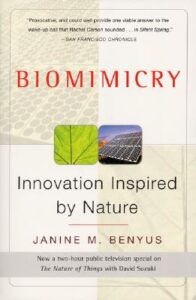
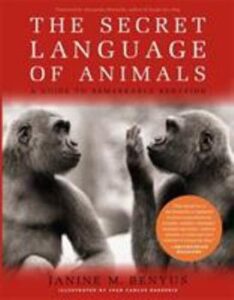

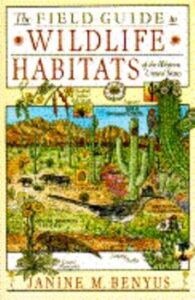

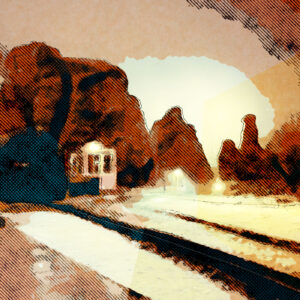
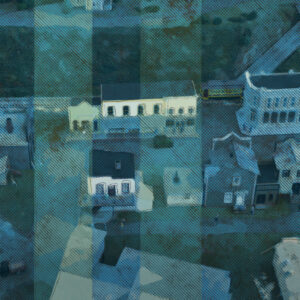


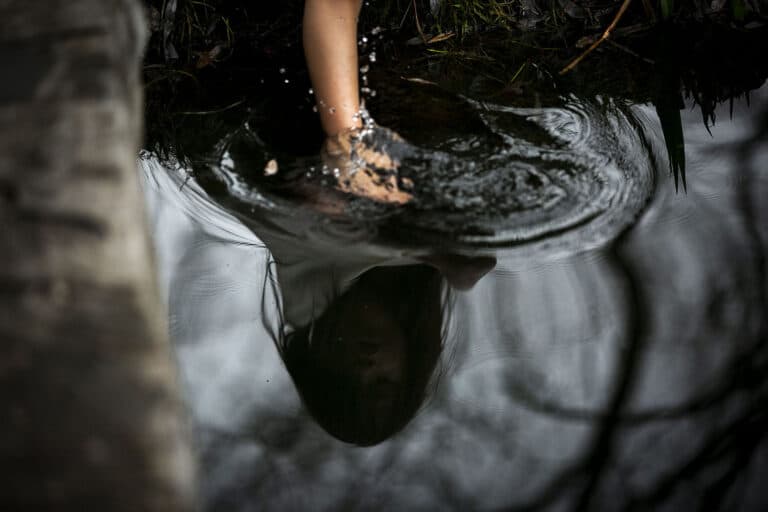
Reflections